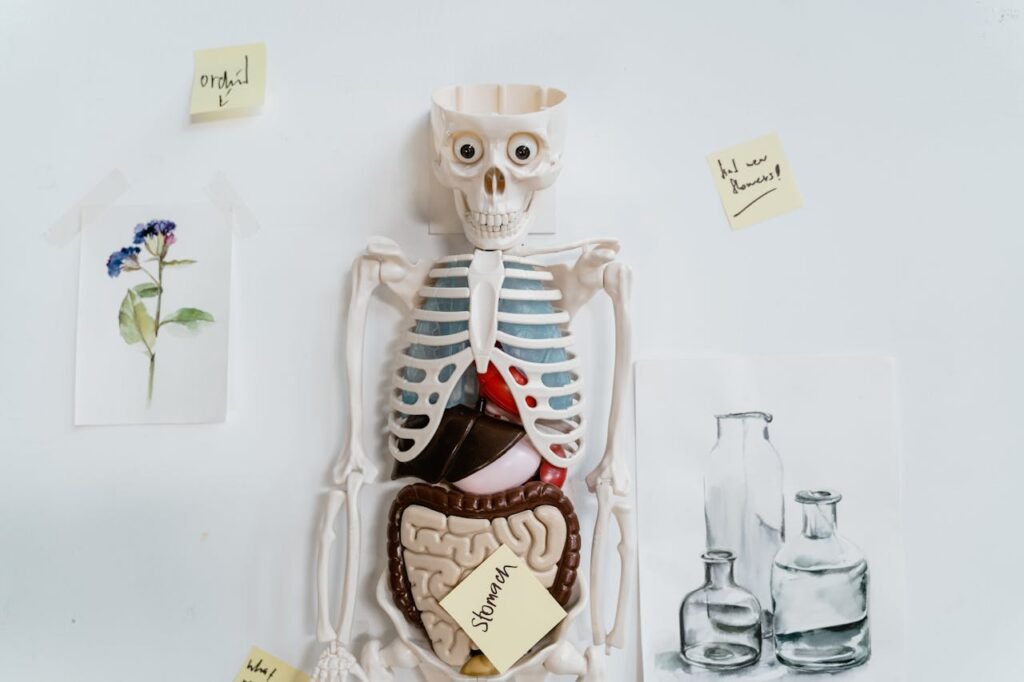Have you ever wondered how you can jump, run, wave, or even just stand up straight? It might seem simple, but behind every little move is a powerful team — your muscles and bones.
Your bones are strong and solid. Your muscles are stretchy and full of energy. On their own, they can’t do much. But when they work together, they help you move, sit, stretch, balance, and do everything your body needs. It’s like having a super team inside you — one that’s always working, even when you don’t notice.
In this article, we’ll explore what bones and muscles really do, how they talk to each other, and why keeping them strong is one of the smartest things you can do. We’ll keep it very simple, easy to follow, and packed with things you can feel in your own body.
Are you ready to learn how your body moves like a machine — powered by you?
Bones – Your Body’s Strong Support
Your bones might not look busy, but they are always working. Even though they’re hidden under your skin and muscles, bones are the reason you can stand up, stay tall, and move without falling apart.
Think of bones as the frame of a house. Just like a house needs walls and beams to stay standing, your body needs bones to keep its shape. Without them, you’d be like jelly — floppy and soft with no way to stand, sit, or move.
What Are Bones Made Of?
Bones may feel hard, but they’re not like rocks. They’re alive, full of blood vessels and cells. Inside each bone is a softer part called marrow, which helps make blood cells.
The outside of the bone is strong and smooth, which gives it the power to hold up your body. But bones aren’t heavy. They’re light and tough — the perfect combo for moving around without too much weight.
How Many Bones Do You Have?
You were actually born with more bones than you have now! Babies start with over 270 bones. But as they grow, some of those bones join together. By the time you’re a teenager, you’ll have about 206 bones.
Each one has a job. Some are long, like your arms and legs. Others are flat, like your ribs and skull. Some are tiny, like the ones inside your ears. But every bone is part of your body’s support system.
Bones Keep You Safe, Too
Your bones don’t just hold you up — they also protect important parts inside your body. Your skull protects your brain. Your ribs protect your heart and lungs. Your spine keeps your nerves safe.
They’re like strong armor, keeping the soft parts inside from getting hurt.
Bones and Joints: The Moving Parts
Bones can’t move by themselves. That’s where joints come in. A joint is where two bones meet — like your elbow, knee, or fingers.
Some joints let you move a lot, like your shoulder, which can spin and lift. Others don’t move much at all, like the bones in your head. Each joint is built for a special kind of motion.
To help the bones move smoothly, joints have something called cartilage — it’s soft, smooth tissue that stops bones from rubbing too hard. This makes movement easy and pain-free.
Muscles – The Movers of Your Body
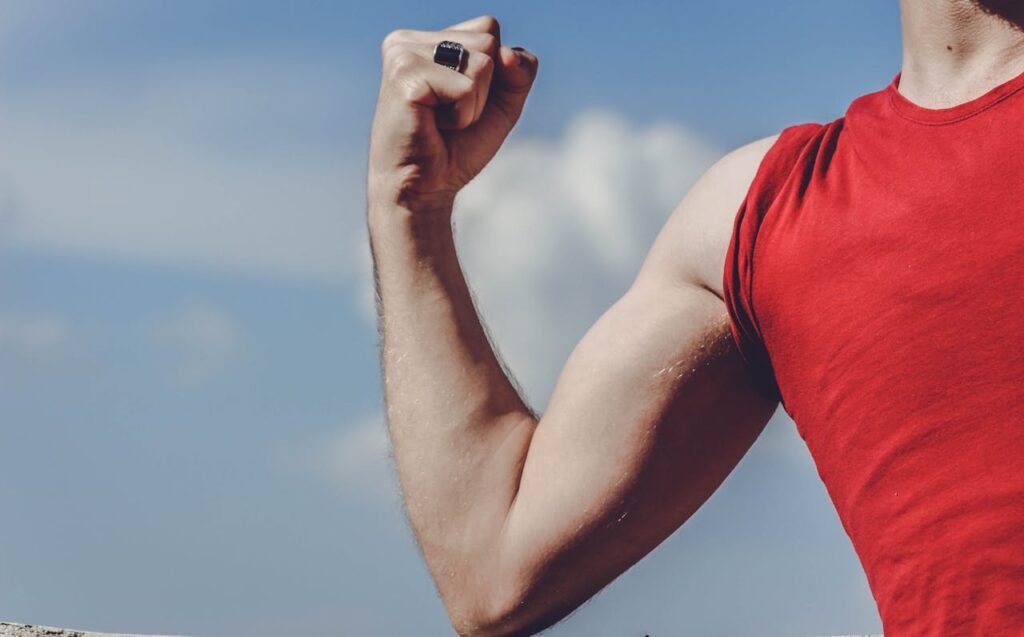
Muscles are what let you move. Every time you blink, smile, kick a ball, or pick up a pencil, muscles are doing the work. You might not always see them, but they’re always busy.
If your bones are the frame of a house, your muscles are the parts that open the doors, move the windows, and let everything function. They pull on your bones to make movement happen. Without muscles, you couldn’t even lift your head.
What Are Muscles Made Of?
Muscles are made up of tiny stretchy fibers. These fibers are bundled together like ropes. When your brain tells a muscle to move, those fibers tighten (or contract), and that’s what makes the muscle pull.
When the muscle relaxes, it stretches back to its normal shape. So every move you make — even tiny ones — is your muscle pulling and relaxing, again and again.
Some muscles are small, like the ones that help you move your eyes. Others are huge, like the muscles in your thighs or back that help you walk, jump, and lift.
How Many Muscles Do You Have?
You have more than 600 muscles in your body! Some you can control — like the muscles in your arms and legs. These are called voluntary muscles, because you move them when you want.
Other muscles work all the time without you even thinking about them. These are involuntary muscles, like the ones in your heart or stomach. Your heart beats every second of your life — and that’s all thanks to muscle power.
Muscles and Bones Work Together
Muscles can’t do their job alone. They need bones to give them something to pull on. And bones need muscles to move them. That’s why muscles and bones are a team.
Let’s say you want to pick up your favorite toy. First, your brain sends a message through your nerves to your arm muscles. Those muscles pull on your arm bones. Your elbow bends, your hand moves, and — there it is — you’re holding your toy.
It happens so fast you don’t even think about it, but your brain, muscles, and bones are all working together in perfect time.
Keeping Muscles Strong
Just like bones, muscles need care to stay strong. Moving, running, playing, climbing — all of these things make your muscles grow stronger and more flexible.
The more you use them, the better they work. Muscles love action. That’s why kids who move a lot feel more energy and balance.
When Muscles and Bones Don’t Work Well
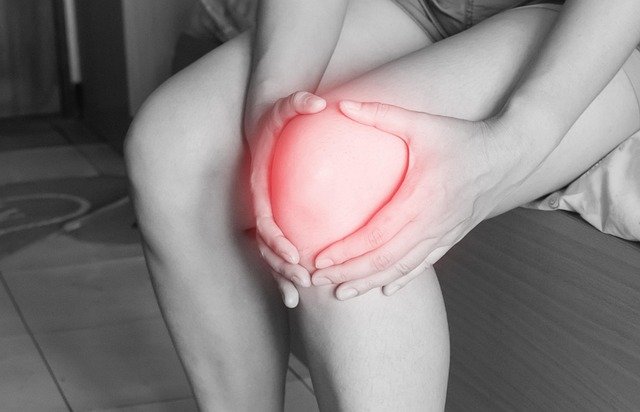
Most of the time, your muscles and bones do their job without a problem. But sometimes, things go wrong. Maybe you fall and hurt your arm. Or your muscles get tired after playing too hard. When that happens, your body gives you signs that it needs rest or care.
Injuries Happen — and That’s Okay
One of the most common problems is an injury. You might twist your ankle while running, or feel sore after climbing too much. These small injuries happen when a muscle gets stretched too far or when a bone gets bumped or bruised.
Sometimes bones can even break — that’s called a fracture. It sounds scary, but bones are smart. They heal themselves! If you rest and follow what the doctor says, your bone can grow back strong again, almost like nothing happened.
Muscles can also get pulled or strained when they stretch too much. That’s why warming up before sports or dance is really helpful — it gets your muscles ready to work.
Why Rest and Stretching Matter
If you never rest your muscles, they don’t get time to rebuild and grow. Muscles grow stronger when you move, but they grow their best when you rest after movement.
Stretching helps muscles stay long and flexible, so they don’t get tight or cramped. It’s like gently waking them up before exercise and helping them relax afterward.
Taking care of your bones and muscles isn’t hard — but it’s something you should think about every day.
Growing Stronger Over Time
As you grow from a child into a teenager, your bones get bigger and stronger. Your muscles get stronger too. But this doesn’t happen all at once. It takes time, movement, rest, and healthy food.
Kids who move their bodies — running, jumping, dancing, climbing, and stretching — usually have stronger bones and muscles. That’s because the more you use your body, the better your body becomes at handling movement.
Even something as simple as walking, riding a bike, or helping around the house helps your muscles and bones grow in a good way.
What Muscles and Bones Need to Stay Strong
Your body is smart, but it needs the right tools to keep your muscles and bones in top shape. Movement is one part of the puzzle, but food, sleep, and simple habits play a huge role too.
Let’s start with food.
Food Is Fuel for Your Body
Everything you eat becomes part of your body. Some foods help your bones grow. Others give your muscles energy. When you eat the right things, your body has what it needs to stretch, bend, run, and grow stronger.
To keep bones healthy, your body needs something called calcium. Calcium helps build bones and keeps them strong. It’s found in milk, cheese, yogurt, green vegetables, and even almonds.
Your body also needs vitamin D. This vitamin helps your body absorb calcium better. You can get vitamin D from sunlight, and from foods like eggs and fish.
Muscles need protein. Protein is found in foods like meat, beans, nuts, and eggs. It helps your muscles repair after play, grow bigger, and stay strong.
When you eat well, your body says “Thank you!” by giving you more energy, better focus, and stronger muscles and bones.
Water Helps Too
You might not think about water much, but it does more than stop you from feeling thirsty. Water helps your muscles move better, keeps your joints soft and smooth, and helps carry nutrients to your bones.
If you don’t drink enough water, your body can feel tired, slow, or sore. That’s why sipping water during the day is a smart habit.
Sleep Builds Strength
Here’s a secret many people don’t know: Muscles grow the most when you sleep.
While you’re dreaming, your body is still busy. It’s repairing tired muscles, building stronger bones, and getting ready for the next day.
That’s why good sleep — not just a lot, but deep, peaceful sleep — is one of the best things you can give your body.
Strong Habits Make a Strong Body
You don’t need to lift heavy weights or run for hours. Just moving your body every day, eating balanced meals, drinking water, and getting rest — these are the real keys to strength.
Simple habits like stretching in the morning, going outside to play, or taking a break from sitting too long can help your muscles and bones stay strong, flexible, and ready for anything.
Muscles and Bones Help with More Than Just Movement
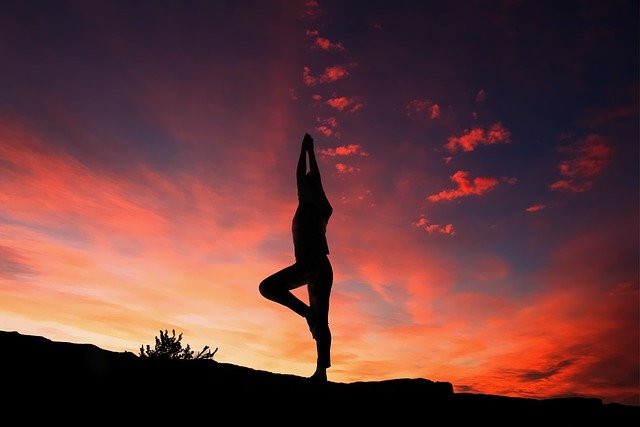
It’s easy to think of muscles and bones as the parts that let you run, jump, stretch, and dance — and that’s true. But they do much more than just help you move. They are part of how you stand tall, stay balanced, feel strong, and even focus better in school.
Standing Tall and Staying Balanced
Your bones give your body its shape. Without them, you couldn’t stand up. But bones alone aren’t enough. Your muscles help you stay balanced, whether you’re sitting in a chair, walking on a beam, or riding a bike.
Even when you’re just standing still, your muscles are working quietly to hold you steady. Tiny muscles in your legs, feet, and back are making small adjustments every second to stop you from falling. You don’t even notice it — but it’s happening all the time.
That’s why balance games, climbing, and even simple stretches help children build the inner strength they need to move with control and confidence.
Posture Affects How You Feel
When you sit or stand with good posture — back straight, shoulders relaxed, feet steady — your muscles and bones are aligned in a healthy way. That doesn’t just make you look better. It actually helps you breathe easier, think clearer, and feel more focused.
Slouching, on the other hand, can make your muscles work harder, which can leave you feeling tired. Poor posture can even affect your mood and how much energy you have during the day.
That’s why kids who learn to understand their bodies from an early age tend to develop better body awareness, posture, and attention skills.
Energy Comes from Good Movement
A healthy body moves well. And when your muscles and bones are strong, moving feels easy. You don’t get as tired. You bounce back quicker. You feel more playful and more alive.
When your body feels good, your brain works better too. Movement gets your heart pumping, your lungs breathing, and your brain thinking more clearly. That’s why kids who move throughout the day often do better with schoolwork, focus, and even problem-solving.
So in a way, muscles and bones don’t just move your body — they also help power your learning.
Growing Bodies, Growing Strength
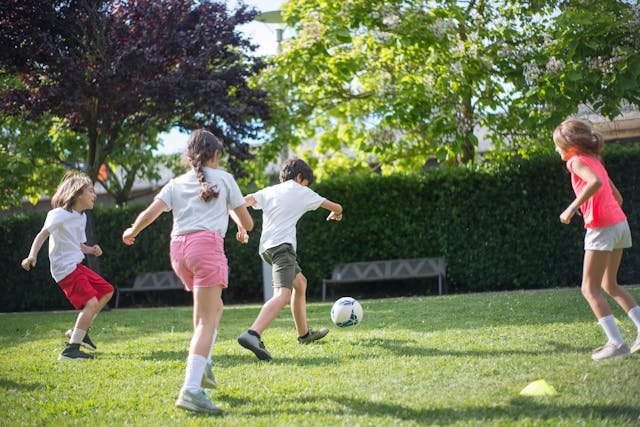
Your body doesn’t stay the same as you grow. Every day, your muscles get stronger, your bones get longer, and your movements become quicker and more skilled. This isn’t just something you notice when your shoes feel tight or your sleeves get short. It’s something happening inside you, all the time.
Bones Get Stronger with Use
When you’re young, your bones are still soft in some places. But the more you move, jump, run, and climb, the more your bones start to build themselves up. That’s right — bones actually get stronger when you use them.
Every time your foot hits the ground during a run, it sends a message to your bones: “Let’s grow stronger!” Your body listens, and it begins building more bone cells to support you.
That’s why it’s so important for kids to move, play, and try new physical things — because your bones are waiting for action to grow the way they should.
Muscles Grow With Practice
Muscles work a little differently. They grow stronger through tiny challenges. When you try to climb a hill, swing across a bar, or even carry something heavy, your muscles stretch and strain just a bit. Then, when you rest, they rebuild themselves to be even stronger.
That’s why things that felt hard last year — like tying your shoes or riding your bike — suddenly become easier. Your muscles are learning. They’re changing. And they’re becoming better at working with your brain and bones.
Every Kid Grows in Their Own Way
Some kids grow faster than others. Some are naturally flexible, while others are naturally strong. That’s perfectly okay. What matters most is that you keep moving, keep trying, and keep listening to your body.
At Debsie, we help every child understand that growth isn’t just something that happens once a year during a check-up. It happens every time you use your body with care and curiosity.
So whether your child is learning to hop on one foot or mastering a handstand, their muscles and bones are growing stronger every step of the way — and so is their confidence.
How Debsie Helps Kids Understand and Care for Their Bodies
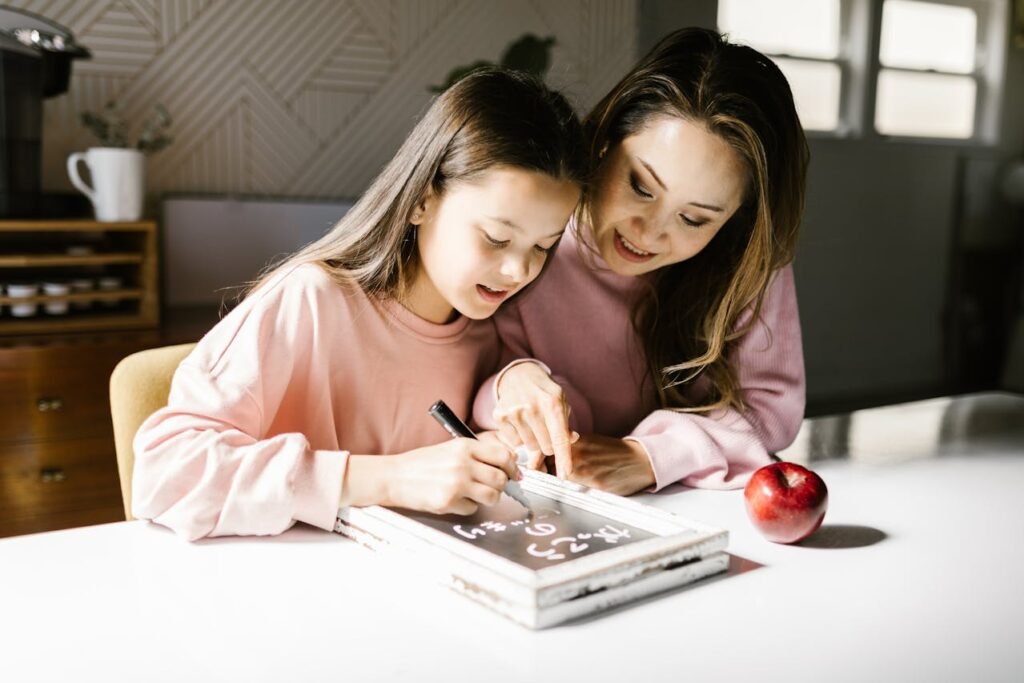
At Debsie, we know that the best kind of science doesn’t just live in books or on screens — it starts with your child’s own body. That’s why when we teach about muscles, bones, and how the body moves, we make it personal, playful, and full of real understanding.
Science That Begins with a Question
Children are naturally curious about how their bodies work. “Why do I get sore?” “What’s inside my arm?” “How come I can stretch one way but not the other?” These are more than just cute questions — they’re the gateway to real learning.
At Debsie, we take these everyday wonders and turn them into full lessons. Every curious moment becomes a chance to explore deeper, in a way that feels natural and exciting. That’s how we build confident learners who don’t just memorize — they understand.
Real Learning Through Real Experience
Our teachers don’t just tell kids what bones and muscles do. They show them — using movement, models, and experiments that children can feel and try for themselves.
Kids stretch their arms to feel their joints move. They press on their legs to feel where the bone meets the muscle. They build simple models to show how muscles pull on bones to make things move.
This kind of learning sticks. It’s not just read — it’s lived.
Building Healthy Habits from the Start
We also help kids make smart choices for their bodies. They learn why stretching matters before exercise, how to rest when muscles feel tired, and what foods make bones strong. But we don’t just tell them — we let them discover it in fun, interactive ways.
Instead of just saying, “Drink milk for strong bones,” we help them explore: “What does calcium do?” “Where else can you find it?” “What happens if you don’t get enough?”
With this approach, children begin to make healthy choices not out of fear — but from a place of understanding.
Teachers Who Make Every Child Feel Seen
Every Debsie teacher is handpicked for their passion and kindness. They meet each child where they are — whether they’re five and wiggly or fifteen and full of big thoughts.
In every class, kids feel encouraged, safe, and proud of their progress. They learn that their questions matter. Their ideas matter. They matter.
This emotional safety makes learning about the body even more powerful — because when kids feel good about themselves, they want to take care of themselves.
Making Science Feel Like Magic
At Debsie, we know the human body is one of the most amazing things on Earth — and we help kids see that. They don’t just learn facts. They feel the wonder, they connect the dots, and they start to trust that they can understand big ideas.
That’s the Debsie way — making science personal, joyful, and deeply real.
Final Thoughts: Your Body Is a Wonder
Every time you move — whether you’re dancing, running, drawing, or simply smiling — your muscles and bones are working together in perfect harmony. They’re the quiet heroes that carry you through the day, helping you learn, play, grow, and become stronger with every step.
Your bones give you strength. Your muscles give you motion. Together, they’re more than just body parts — they’re a team that makes you possible.
And the more you understand how they work, the more confident you’ll feel in your own skin. You’ll learn to care for your body, respect its power, and trust its signals. That’s not just science — that’s life-changing knowledge.
At Debsie, we make this learning simple, fun, and deeply real. We help children look inside themselves and discover just how amazing they truly are — from the skeleton in their spine to the strength in their stride.
✨ Ready to help your child explore the science of their own body — and love every second of it?
🎓 Book a free class today at https://debsie.com/courses and watch your child’s curiosity turn into real understanding.
Read next:
